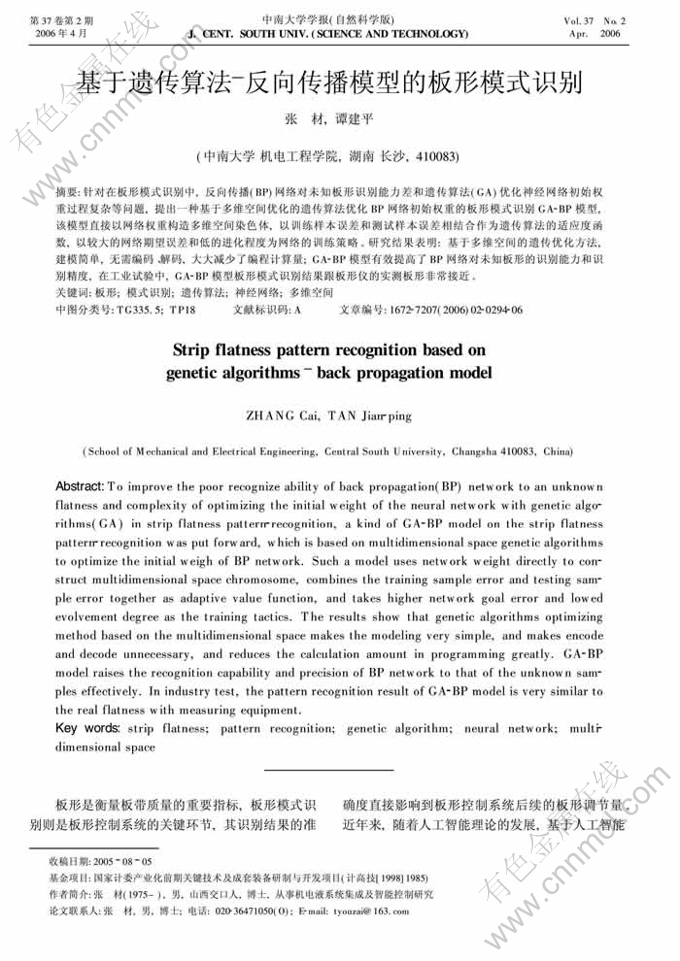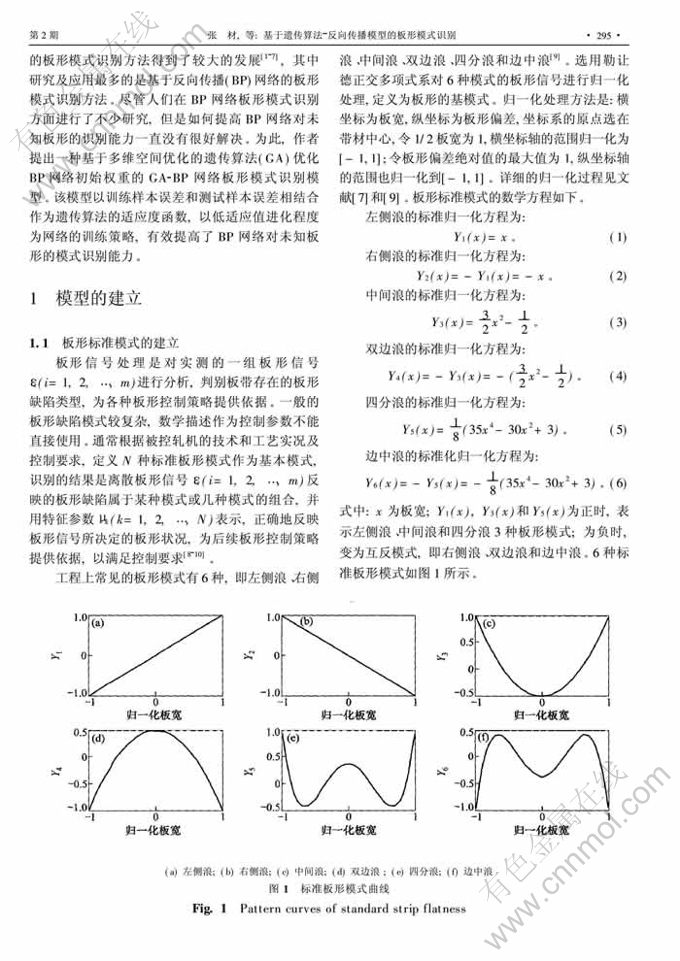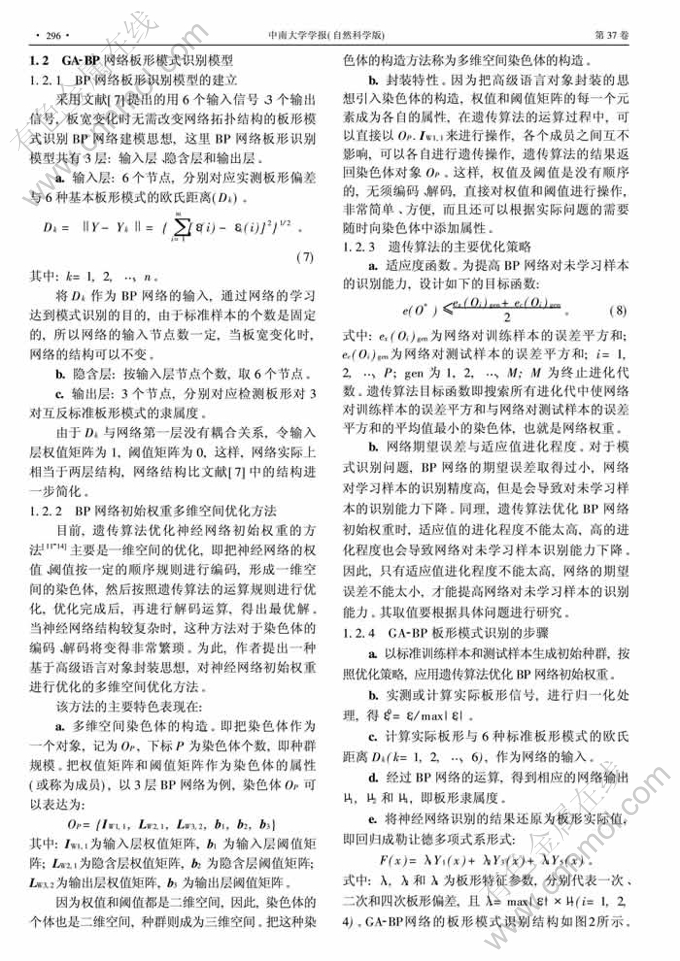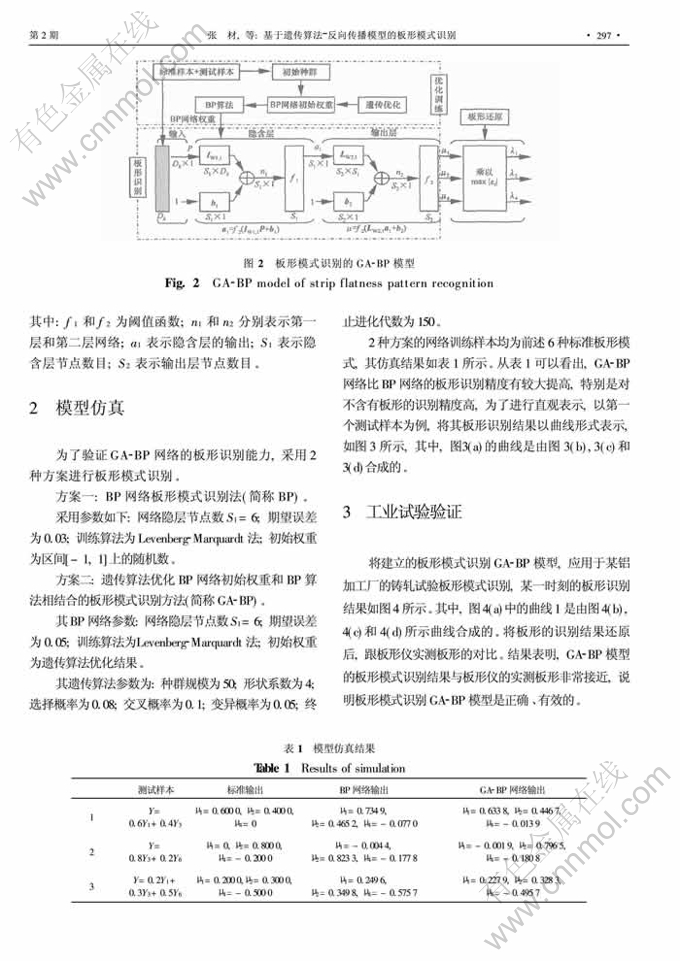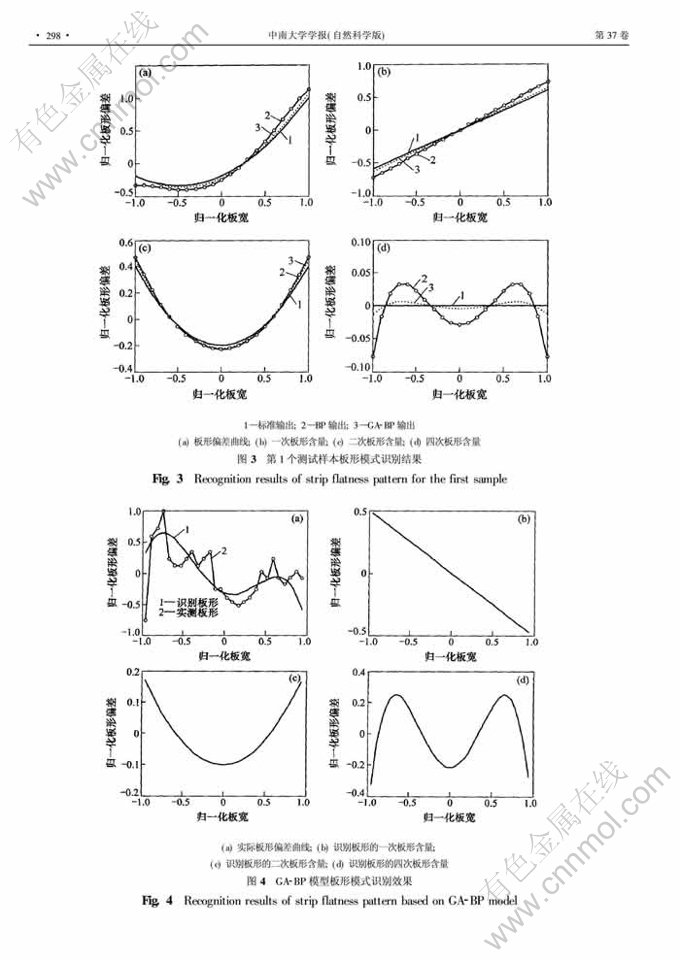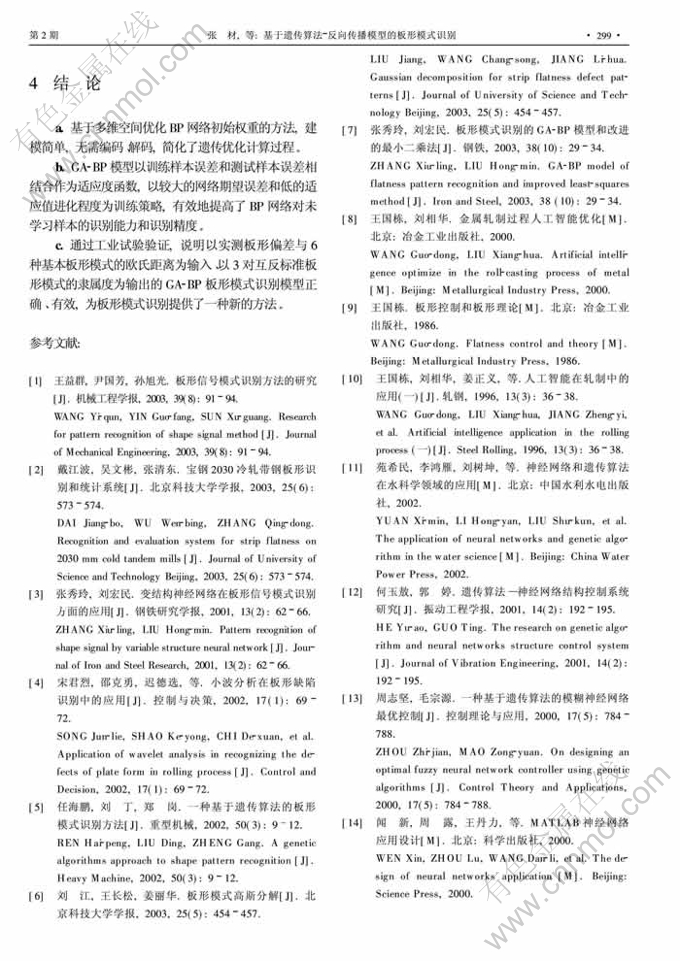基于遗传算法反向传播模型的板形模式识别
来源期刊:中南大学学报(自然科学版)2006年第2期
论文作者:张材 谭建平
文章页码:294 - 299
关键词:板形;模式识别;遗传算法;神经网络;多维空间
Key words:strip flatness; pattern recognition; genetic algorithm; neural network; multidimensional space
摘 要:针对在板形模式识别中,反向传播(BP)网络对未知板形识别能力差和遗传算法(GA)优化神经网络初始权重过程复杂等问题,提出一种基于多维空间优化的遗传算法优化BP网络初始权重的板形模式识别GA-BP模型,该模型直接以网络权重构造多维空间染色体,以训练样本误差和测试样本误差相结合作为遗传算法的适应度函数,以较大的网络期望误差和低的进化程度为网络的训练策略。研究结果表明:基于多维空间的遗传优化方法,建模简单,无需编码、解码,大大减少了编程计算量; GA-BP模型有效提高了BP网络对未知板形的识别能力和识别精度,在工业试验中, GA-BP模型板形模式识别结果跟板形仪的实测板形非常接近。
Abstract: To improve the poor recognize ability of back propagation(BP) network to an unknown flatness and complexity of optimizing the initial weight of the neural network with genetic algorithms(GA) in strip flatness pattern-recognition, a kind of GA-BP model on the strip flatness pattern-recognition was put forward, which is based on multidimensional space genetic algorithms to optimize the initial weigh of BP network. Such a model uses network weight directly to construct multidimensional space chromosome, combines the training sample error and testing sample error together as adaptive value function, and takes higher network goal error and lowed evolvement degree as the training tactics. The results show that genetic algorithms optimizing method based on the multidimensional space makes the modeling very simple, and makes encode and decode unnecessary, and reduces the calculation amount in programming greatly. GA-BP model raises the recognition capability and precision of BP network to that of the unknown samples effectively. In industry test, the pattern recognition result of GA-BP model is very similar to the real flatness with measuring equipment.
